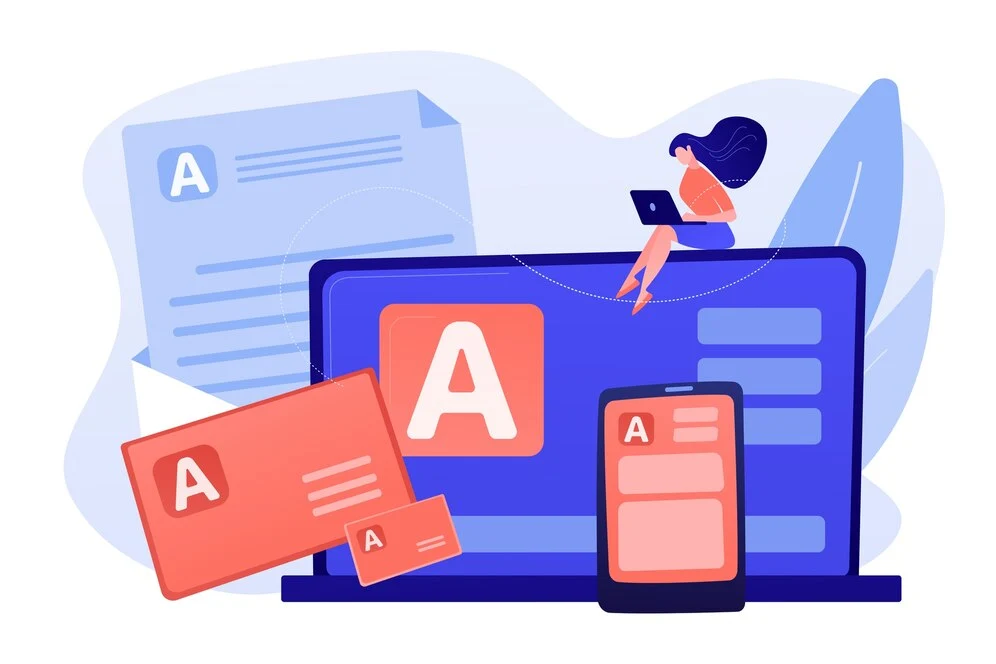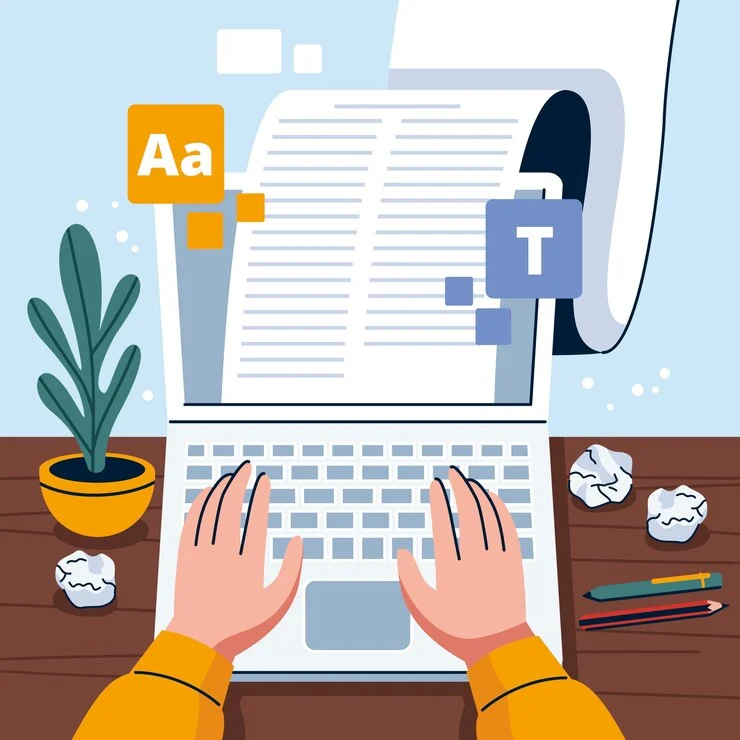Key Takeaways:
- Plagiarism undermines content quality, hurts your credibility, and can have legal repercussions.
- Conduct your own research, develop your writing style, and properly cite sources to avoid plagiarism.
- Leverage plagiarism checkers and citation guides to ensure your work is original.
- Develop a unique voice, explore new ideas, and find fresh perspectives to set your content apart.
- Don’t fall for shortcuts like content scraping or paraphrasing without attribution.
In the field of content writing, plagiarism issues, including content scraping and pasting content, are rampant. This blog post aims to help you prevent content writing plagiarism, ensuring your piece of content remains high-quality.
It emphasises the importance of using quality sources and respecting the original material of copyright owners.
By adopting a unique writing style and dedicating sufficient time, you can avoid unintentional plagiarism. Remember, the original writer spent valuable time creating their work.
Protect Your Brand & Recover Revenue With Bytescare's Brand Protection software
What Is Plagiarism in Content Writing?
When you use someone else’s work without giving them credit, you’re plagiarising their work. It happens when you use someone else’s words, ideas, or information in your own work without giving credit to them.
Here are some examples of plagiarism:
- Word-for-Word Copying: When you copy parts of a text verbatim without using quotation marks, it appears as if those words are your own.
- Paraphrasing Without Attribution: Paraphrasing involves rephrasing someone else’s idea in your own words. However, if you don’t cite the source, it can still be considered plagiarism.
- Incorrect Source Information: Providing incorrect details about a source prevents readers from verifying the information.
- Overreliance on Quotations: Even with proper citations, relying too heavily on someone else’s words doesn’t contribute to originality.
- Self-Plagiarism: Reusing your own work from a previous assignment without proper citation is academically dishonest.
Remember, acknowledging sources and creating original content are essential in maintaining academic integrity.

Why is Plagiarism a Problem in Content Writing?
Plagiarism is a significant issue in content writing for several reasons:
- Intellectual Theft: Plagiarism involves taking someone else’s work, ideas, or words and presenting them as your own. It’s akin to stealing intellectual property.
- Academic Dishonesty: In educational settings, plagiarism undermines the learning process. Students are expected to engage with material, think critically, and express their unique perspectives.
- When readers encounter plagiarised content, they lose trust in the author or source. Originality and authenticity are crucial for building credibility.
- Legal Consequences: Plagiarism can lead to legal disputes, especially in cases of copyrighted material. Authors, journalists, and content creators can face lawsuits.
- If everyone copied existing content, there would be no innovation or fresh ideas. Plagiarism stifles creativity and hinders progress.
Protect Your Brand & Recover Revenue With Bytescare's Brand Protection software
Steps to Prevent Content Writing Plagiarism
Preventing plagiarism in content writing is crucial for maintaining integrity and originality.
Here are some effective steps to avoid plagiarism:
1. Understand What Constitutes Plagiarism
The first step in preventing plagiarism is to understand what it is. Plagiarism is more than just copying and pasting whole articles.
It also means using someone else’s words, data, or ideas without giving them credit. It is theft to copy someone else’s words without giving credit to the original source. Content writers need to be aware of these specifics.
2. Emphasise Original Research
One great way to make sure your content is original is to do your own study and use what you find as the basis for your quality content.
Original research gives your readers something of worth and makes your content stand out from what’s already out there. It shows that you care about quality and authenticity, which are traits that viewers and search engines value a lot.
3. Use Plagiarism Detection Tools
There are a number of tools that can help you find possible instances of copying in your writing. Bytescare, Turnitin, Grammarly, and Copyscape are some of the tools that can check your text against billions of web sites and documents and show you where there is duplicate content.
Using these tools regularly as part of the process of writing content is a smart way to keep your work original.
4. Cite Your Sources
It is imperative that you give credit to the original authors of any ideas or words you use. Not only does proper citation stop plagiarism, it also gives your work more credibility.
It shows that you have conducted thorough research and are respectful of intellectual property. Learn about the different citation styles (APA, MLA, Chicago, etc.) so you can use them correctly in your writing.
5. Quoting and Paraphrasing Properly
There will be instances where you’ll want to use direct quotes or paraphrase someone else’s work. When quoting, use the exact words and put them in quotation marks, followed by a proper citation.
When paraphrasing, significantly alter the structure and wording of the original text while maintaining the original meaning. Always attribute the original idea to its source.
6. Develop Your Voice
To stand out, you need to find your own style and point of view. Having a unique style not only makes your content more interesting, but it also keeps you from copying other people’s work. Regular writing will help you find your style and make your writing clearly yours.
7. Educate Your Content Team
When you have a group of writers working for you, it’s important to teach them about copying and state your standards for creating original content.
You might want to teach people how to do research, properly quote sources, and use tools that check for plagiarism.
8. Regularly Update Your Content Creation Process
As digital content standards and SEO practices evolve, so should your content creation process.
Regularly review and update your guidelines for researching, writing, and reviewing content to incorporate the latest best practices for preventing plagiarism and optimising for search engines.
9. Leverage Technology and Tools
Beyond plagiarism detection tools, several other technologies can aid in creating unique content.
For example, AI-based writing assistants can help generate ideas and provide language suggestions that can be further customised. However, always review AI-gnerated content for potential plagiarism and authenticity.

What Are Some Tips for Writing Original Content?
Writing original content is crucial in distinguishing your work from the masses, engaging your audience on a deeper level, and establishing yourself or your brand as a thought leader in your niche.
Here are some tips to ensure that the content you produce is not only original but also resonates with your readers:
Develop a Unique Voice: Your voice is how you express your personality in your writing. It’s a combination of your tone, style, and the unique perspective you bring to your topics. Cultivate a voice that reflects who you are or what your brand stands for, making your content instantly recognisable.
Stay Curious: Inventive ideas tend to start with a sense of wonder. Don’t be afraid to ask things that no one else is. Dig deep into your topics to find angles or ideas that haven’t been looked at before. This method not only helps you be original, but it also shows that you care about giving your audience something of value.
Read Widely and Diversely: Expose yourself to a broad range of subjects, genres, and perspectives. This exposure can spark new ideas, inspire fresh approaches, and help you make unexpected connections between seemingly disparate topics.
Draw from Personal Experience: Incorporate your own stories, lessons learned, and personal insights into your content. Personal anecdotes can not only enhance the originality of your work but also build a stronger connection with your audience.
Engage with Your Audience: Listen to the questions, concerns, and feedback from your audience. Engaging with your readers can provide you with a wealth of ideas for original content that speaks directly to their interests and needs.
Challenge Conventional Wisdom: Don’t be afraid to question widely accepted beliefs or explore contrarian viewpoints. Original content often comes from seeing and presenting information in a way that challenges the status quo.
Use Brainstorming Techniques: Employ brainstorming techniques like mind mapping, free writing, or the SCAMPER method to generate new ideas. These techniques can help break through creative blocks and uncover innovative angles for your content.
Embrace Your Creativity: Allow yourself the freedom to experiment with different formats, structures, and storytelling techniques.
Protect Your Brand & Recover Revenue With Bytescare's Brand Protection software
What’s Next?
In the field of content writing, plagiarism poses significant challenges for content creators. Understanding the various types of plagiarism is crucial.
Whether it’s direct plagiarism, where an original author’s work is copied verbatim, or accidental plagiarism due to poor sentence structure, content writers must be vigilant. Use online plagiarism checker software, such as Bytescare, to check your content for plagiarism.
Legal issues loom large, making awareness essential. As content creators, we must strive for originality, avoiding the common forms of plagiarism.
Book a demo with Bytescare to see how their detection tools safeguard your content against this pervasive problem.
The Most Widely Used Brand Protection Software
Find, track, and remove counterfeit listings and sellers with Bytescare Brand Protection software

FAQs
Is plagiarism allowed in content writing?
No, plagiarism is not allowed in content writing. Plagiarism involves using someone else’s words, ideas, or work without proper attribution, which is unethical and can have serious consequences.
What is mean by plagiarism in content writing?
Plagiarism in content writing refers to the act of copying or closely imitating someone else’s words, ideas, or work without giving proper credit. It can include copying text directly, paraphrasing without acknowledgment, or using someone else’s ideas without citation.
Is plagiarism on social media illegal?
While plagiarism itself may not be illegal in all cases, it can still violate the terms of service of social media platforms. Additionally, if the plagiarised content infringes on someone else’s copyright, it could lead to legal consequences.
What is an example of plagiarism in writing?
An example of plagiarism in writing could be copying and pasting a paragraph from a website or book without quotation marks or citation, presenting someone else’s ideas as your own without attribution, or closely paraphrasing someone else’s work without acknowledgment.
How much plagiarism is allowed?
In academic and professional contexts, any amount of plagiarism is generally unacceptable. It’s essential to strive for originality in your work and properly cite any sources you use.
Many institutions and organisations have strict policies regarding plagiarism, with consequences ranging from failing grades to legal action.
Why should content writers work to avoid plagiarism?
Content writers should work to avoid plagiarism because it upholds integrity, credibility, and professionalism in their work.
Original content not only respects the efforts of other creators but also builds trust with readers and establishes the writer’s expertise and authority in their field. Additionally, avoiding plagiarism helps writers avoid legal and ethical repercussions.
Ready to Secure Your Online Presence?
You are at the right place, contact us to know more.

